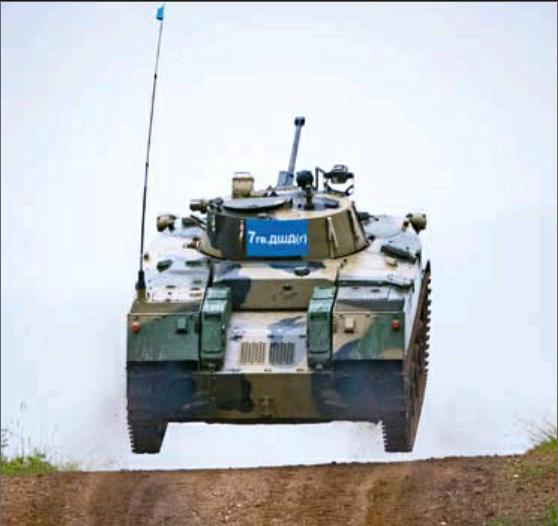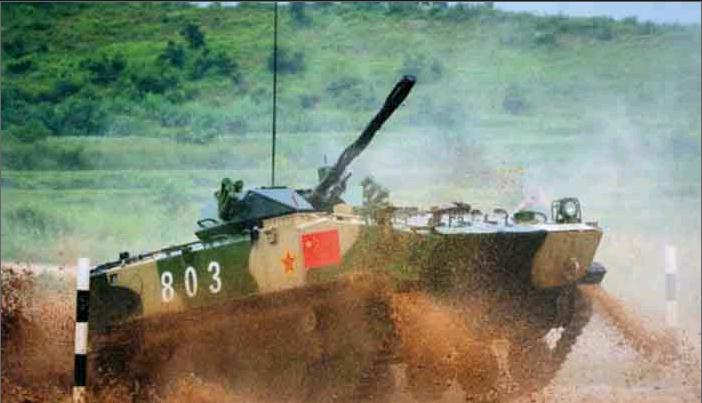Friendship Over Championship
2017-09-27byChenJianandWanQuan
by+Chen+Jian+and+Wan+Quan



From July 29 to August 12, the Aviadarts and Airborne Platoon, two competitions under the framework of the 2017 International Army Games (IAG), were held in Hubei Province and Jilin Province, respectively. It was the first time the Chinese Air Force hosted comprehensive international military competitions.
Dubbed the “Military Olympics,” the IAG is an annual military competition event launched by the Ministry of Defense of the Russian Federation in 2013.
Chinese President Xi Jinping sent a congratulatory video to the IAG when it convened in late July. In the video, Xi pointed out that the IAG has become a key brand for regional military exchange and cooperation and an important platform for armies from various countries to deepen friendship and learn from each other. He added that the Chinese army is willing to make common progress through mutual learning in the competition arena.
Airborne Platoon: Landing in Guangshui
The Airborne Platoon competition was held in Guangshui, Hubei Province. Featuring low hills and crisscrossing rivers, the city is home to one of the Chinese Air Forces top training grounds. The competition attracted airborne troops from China, Iran, Kazakhstan, Morocco, Russia, South Africa and Venezuela. The Chinese team was comprised of 42 paratroopers from two well-known companies: the Shangganling 8th Company with Special-class Merits and the 3rd Red Company.
The competition included three events: vehicles, non-vehicles and BASE jumping. At 12:00 p.m. on August 8, accompanied by roaring engines, several Russian assault vehicles jumped off the starting line to kick off the vehicle relay—the last and most important event in the Airborne Platoon competition. Participants also included teams from China and Kazakhstan. In the event, they completed an obstacle race in mountainous terrain coupled with a shooting competition.
On the Chinese team, No. 801 assault vehicle took the first leg of the relay. It precisely passed every obstacle and hit all six shooting targets. No. 802 vehicle, which ran the second leg, hit four of the six targets. When No.803 vehicle started off on the third leg, it began raining. The track became muddy. The gunner, Liu Xianjun, struggled to keep his eyes open and held his breath when he shot. The target scoring system showed that he hit every target.
The curtain of the 10-day Airborne Platoon competition fell when the vehicle relay concluded. Of seven participating countries, China took first in 11 of 12 subevents in both vehicle and non-vehicle events.endprint

Aviadarts: Hovering above Taipingchuan
The venue of the Aviadarts competition was Taipingchuan Shooting Range of the Chinese Air Force, located at the intersection of Liaoning Province, Jilin Province and the Inner Mongolia Autonomous Region. During the competition, the weather was not as hot as in Guangshui, but rainy and cloudy, which is rare for the region.
Aviadarts is a competition of military aviators categorized into eight events for fighters, fighter-bombers, bombers, scouts, attackers, transport aircraft, transport helicopters, and armed helicopters. Both China and Russia dispatched 39 aircraft to participate in the competition. The average age of Chinese and Russian pilots in the competition was only 35.
The Aviadarts competition is divided into three phases: physical stamina, flight skills and air assault on ground targets. The physical stamina phase involves swimming and basketball races. On August 8, the subevents of the second phase, such as visual reconnaissance and low-altitude aerobatics, kicked off. According to Chinese pilot Wang Sen, low-altitude aerobatics not only look great visually, but are also practical in real battle. “These skills can help pilots avoid anti-aircraft fire, radar tracking and even missiles.” In the third phase of the competition, Chinese and Russian military aircraft assaulted ground targets with aerial bombs, rocket projectiles and guns to test precision assaults.
During the competition, Chinese military aviators won four subevents as well as many group and individual prizes.
On August 10, the Aviadarts competi- tion concluded in Changchun, the capital of Jilin Province. Ma Xiaotian, a member of Chinas Central Military Commission and commander of the Chinese Peoples Liberation Army (PLA) Air Force, delivered a speech at the closing ceremony. He noted that the Chinese Air Force has always upheld the concept of friendly, coordinated development and is willing to broaden interaction, cooperation and friendship with air forces of various countries and work together to upgrade military flight training and make greater contributions to building an airspace environment featuring win-win cooperation and lasting safety and harmony.
Alongside military competitions, participants also carried out extensive cultural exchange. On August 1, which marked the 90th birthday of the PLA, foreign participants celebrated the anniversary with Chinese troops and extended their congratulations.
Although they competed against each other, participants from different countries became friends. During breaks, they hugged and took photos with each other. The direct dialogue between those participants laid an emotional foundation for broader exchange and cooperation. “The IAG has become a significant platform for different countries to deepen friendship and learn from each other,” remarked Shen Jinke, spokesperson for the Chinese Air Force. “Chinas Air Force is willing to strengthen exchange and cooperation with air forces from around the world and work together to realize new achievements in international military cooperation and make new contributions to safeguarding world peace.” endprint
endprint